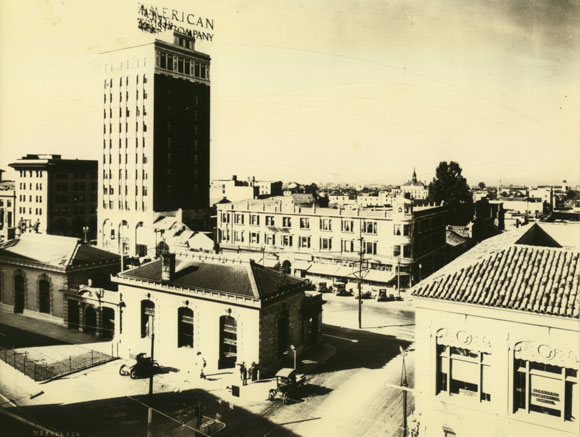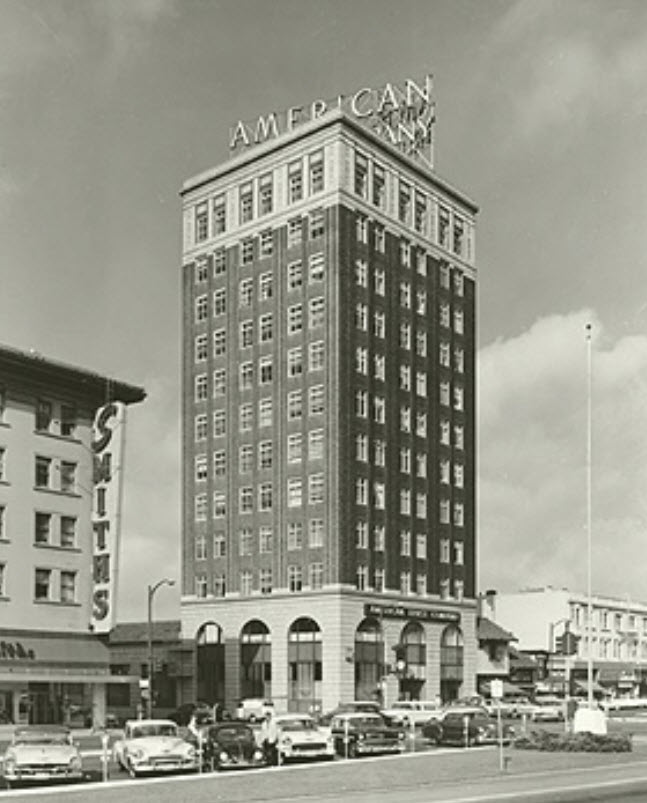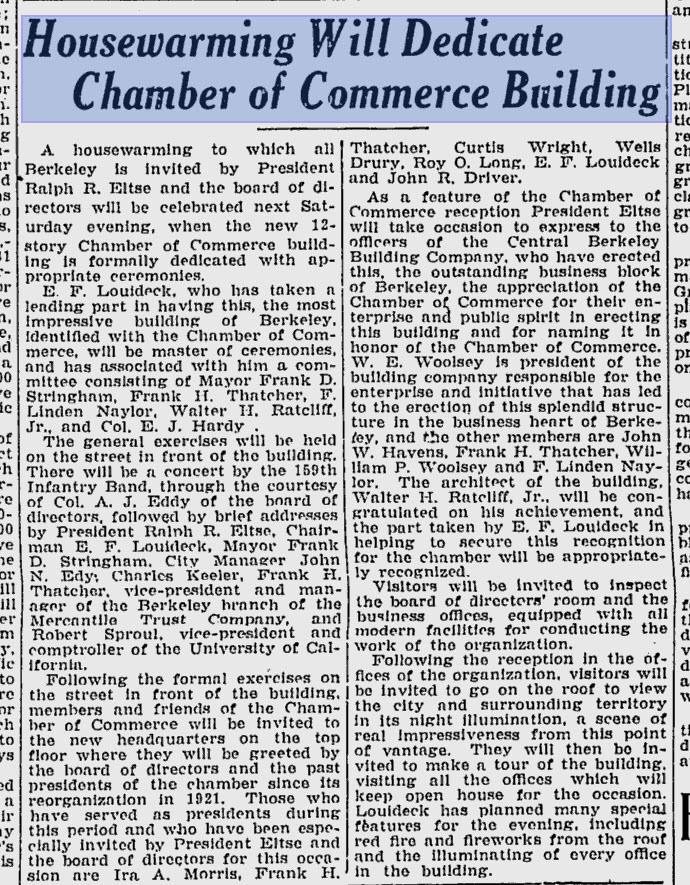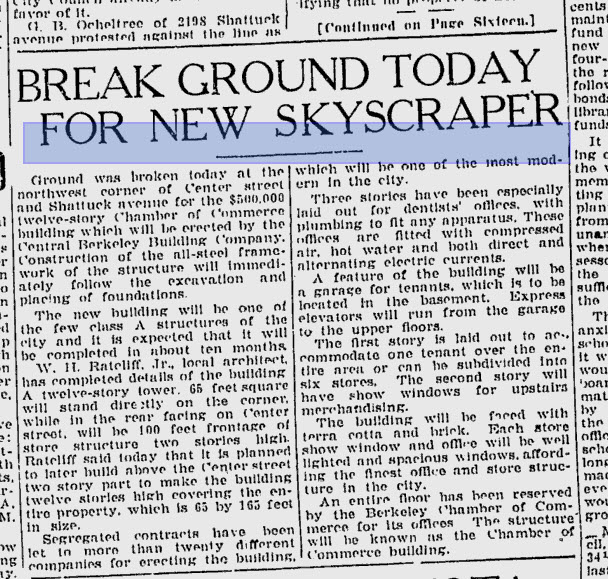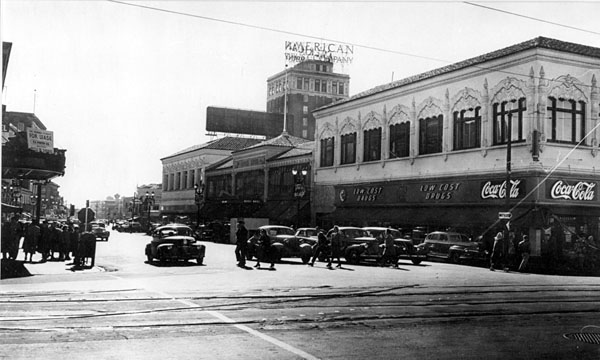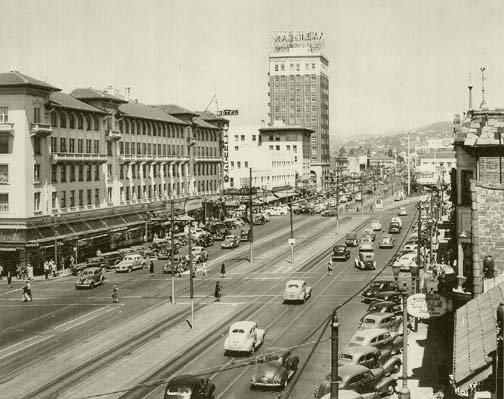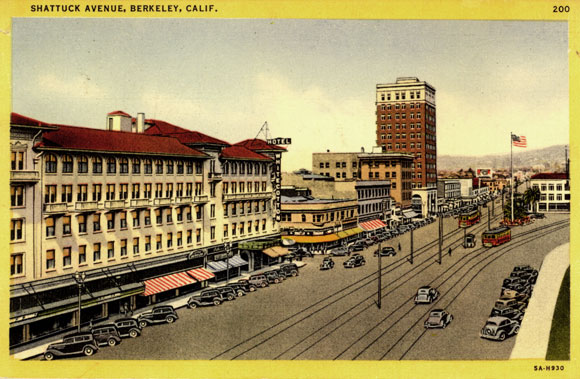Wells Fargo Bank postcard (ca. 1940), courtesy Anthony Bruce, BAHA Archive.
Berkeley’s first highrise, the twelve-story Chamber of Commerce Building, was designed by Walter H. Ratcliff, Jr. in 1925 for the Central Berkeley Building Company. It was named for the Berkeley Chamber of Commerce, which had its offices on the top floor until the late 1930s, when it moved across the street to 100 Berkeley Square, after which the building became known as the American Trust Building.
It was in the American Trust Co. vault that the famous Stanford Axe resided for many years, being conveyed to rallies at the Greek Theater in an armored car, before it was stolen on April 3, 1930, by a daring Sequoia "twenty-one" band from Stanford:
"With four of their number posing as photographers and others posing as Cal students sitting on top of or hanging onto the armored car, they snatched the “hallowed adaga” from Cal on the steps of the American Trust Company using a tear gas bomb to confuse the crowd."
Today, the building is more widely known as the Wells Fargo Building, and was designated a City of Berkeley Landmark on December 17, 1984 on the National Register of Historic Places (#85001916).
While the original construction of the building consisted of an all-steel framework, with all steel columns and beams encased in concrete for fire protection purposes, the exterior bricks were later removed, drilled, and re-attached to the building walls using stainless steel pins to eliminate the risk of them falling during an earthquake. California Preservation Foundation holds a conservation easement that protects the exterior character of the building.
Sources: Berkeley Heritage, Aug 11, 1925 Berkeley Daily Gazette
For nearly a half century, this steel frame and concrete structure, clad in brick and terra cotta, was Berkeley’s only “skyscraper.” Walter Ratcliff, highly respected for his fine residences and public buildings throughout Berkeley, designed this Classical Revival commercial tower at the peak of his career. Six ground floor arches were added soon after construction to replace original storefronts. The west wing was designed to accommodate additional stories at a later time, a plan derailed by the Depression.
- Berkeley Historical Plaque Project
2010


